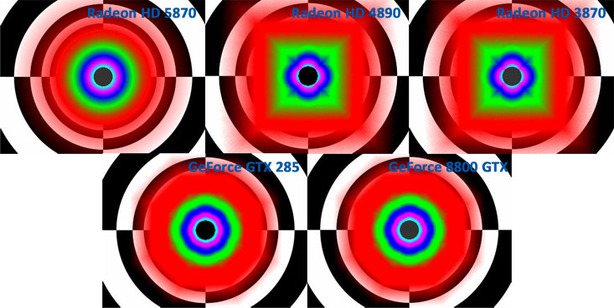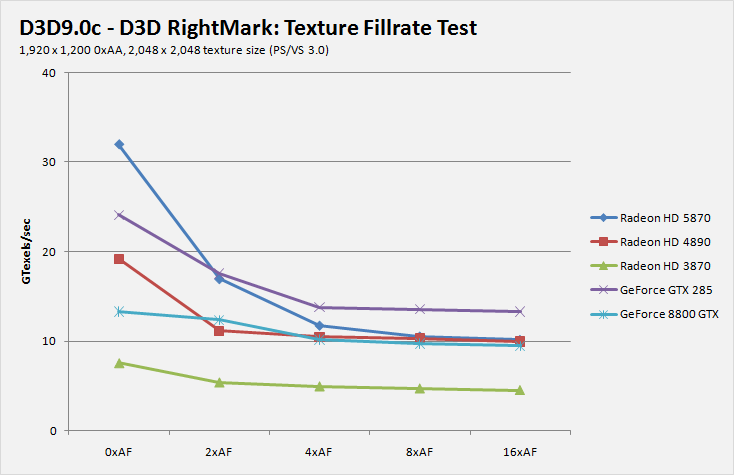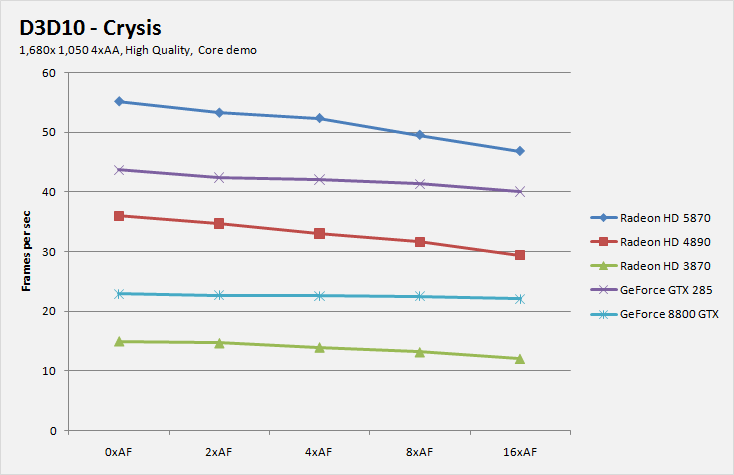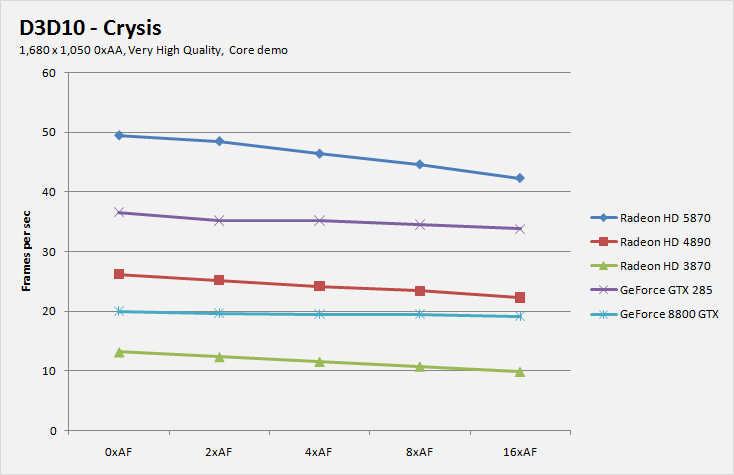Anisotropic Filtering
The massaging of the texture units doesn't stop there though, as AMD has updated its anisotropic filtering algorithm - a move that's sure to please those of you who really appreciate super-sharp textures. This new algorithm is completely angle-independent, meaning that it doesn't vary its level of detail depending on a surface's angle from the camera.AMD said that the new anisotropic filtering algorithm is "as good as" the Microsoft Direct3D reference rasteriser, but does so without an additional performance cost over its previous anisotropic filtering algorithms.
It's difficult to really show this effect with static in-game images, but it's definitely apparent if you're sensitive to pixel crawling. We've therefore used the familiar texture filter testapp, where the camera looks down a simple 3D rendered cylinder.
In simple terms, the tighter the circle is, the better the anisotropic filtering algorithm is at its job - the ideal situation is for the circle to be tight and as close to a circle as possible. A perfect circle indicates no angle dependency in the algorithm. The various colours represent the mip-map boundaries and the smoother the transitions are between the mip-map boundaries, the more trilinear is being applied.

Before the Radeon HD 5870 came along, Nvidia's GeForce 8800 GTX (and by extension, GeForce GTX 200 series) held the gold standard for anisotropic filtering with an almost completely angle-independent algorithm. Where Nvidia fell down was that, like AMD, it used a hybrid ‘brilinear’ filtering algorithm to improve performance, because trilinear filtering is particularly resource intensive.
Of course, you can achieve a slightly better circle with Nvidia's high-quality driver mode, but we've stuck to using the driver defaults here. The new Radeon not only reduces angle dependency to an absolute minimum – it’s easily the best GPU we've seen in this test - but also appears to have dropped the brilinear filtering algorithm in favour of a purer trilinear filtering algorithm. It's about time, in many respects, because there's more than enough texture sampling horsepower available in the Cypress GPU.

See page ten for test kit
Interestingly, the GeForce GTX 285 handles integer texture formats more efficiently when anisotropic filtering is introduced. We've applied trilinear filtering in all cases here, but it's important to remember that only the Radeon HD 5870 is using 'true' trilinear filtering - the others are using a combination of bilinear and trilinear filtering to achieve better performance. As a result, the Radeon HD 5870 is doing more work, so it's understandable to see it fall behind slightly.


See page ten for test kit
In Crysis, things turn around. We've chosen this test because it's notoriously heavy when it comes to anisotropic filtering and we're looking at the steepness of the curve in particular here, rather than the raw frame rates. As AMD stated, anisotropic filtering causes performance to fall at a fairly linear rate on the HD 5870 - certainly no worse than the HD 4870 - but it cannot match the GeForces' excellent AF scaling: there's virtually no penalty for enabling 16x AF. Don't forget that the HD 5870 is doing more work than the GeForce cards, as it not only has superior anisotropic filtering quality, but it's also using full trilinear filtering as well.

MSI MPG Velox 100R Chassis Review
October 14 2021 | 15:04










Want to comment? Please log in.